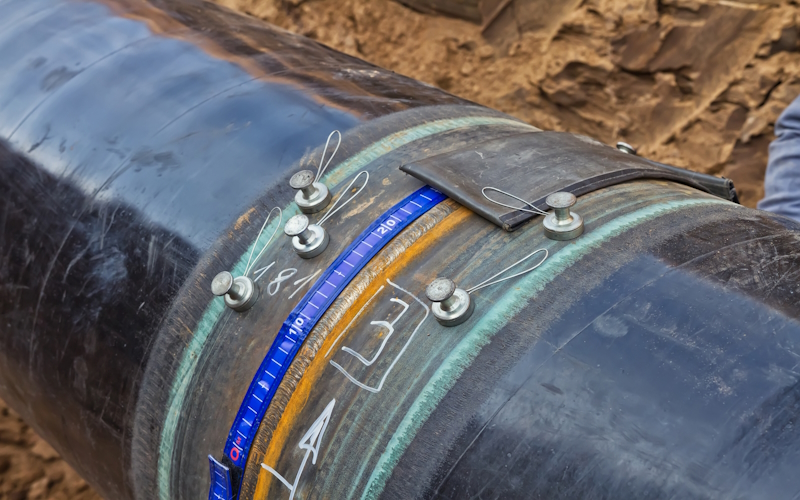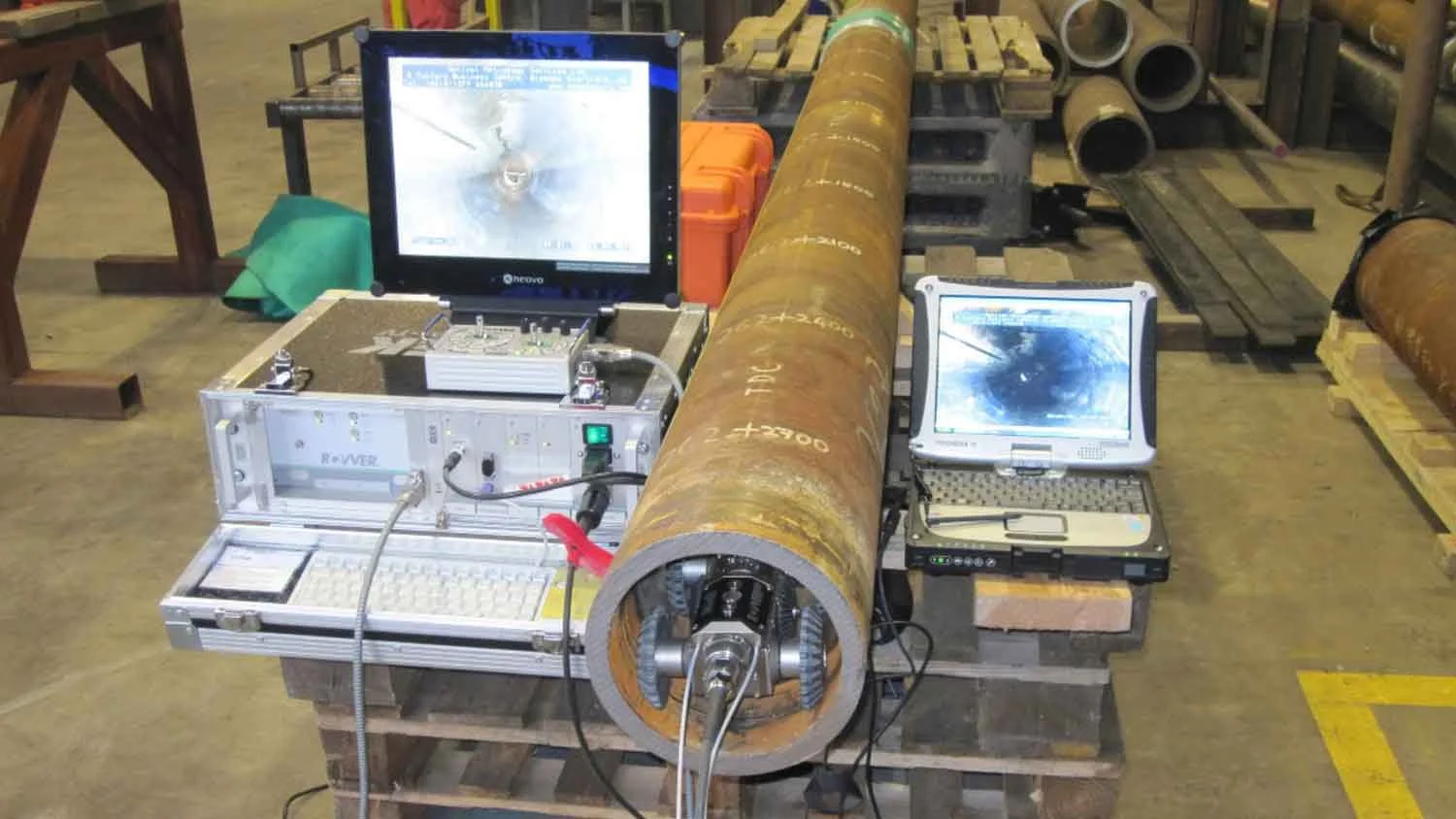Advanced Pipeline Welding Inspection: Methods for Identifying Flaws
Advanced Strategies in Pipe Welding Examination: Advancements and Technologies for Enhanced Accuracy and Reliability in Weld Analysis
The landscape of pipe welding assessment is going through a substantial transformation, driven by advanced techniques that assure to improve both precision and reliability in weld analyses. Developments such as automated examination systems and advanced imaging modern technologies are redefining typical practices, while non-destructive screening approaches guarantee material honesty is maintained. As these technologies evolve, they not just elevate issue detection rates however additionally make it possible for a lot more reliable maintenance techniques. However, the ramifications of these innovations expand past immediate advantages, elevating important questions concerning future practices and requirements in the industry.

Value of Weld Evaluation
Making sure the honesty of pipe welds is critical to the general safety and security and dependability of commercial systems. Rigorous evaluation of welds is important to the lifecycle of pipe facilities.
The significance of weld examination prolongs beyond simple conformity with regulative requirements. It functions as a proactive measure to identify and correct blemishes, such as incomplete fusion, porosity, or splits, prior to they escalate into severe issues. Efficient examination techniques also add to the longevity of pipelines, reducing maintenance expenses and enhancing operational efficiency.
Moreover, extensive weld inspections foster trust fund amongst stakeholders, including governing bodies, capitalists, and the neighborhoods offered by these pipes. By making sure that all welds fulfill the called for standards, organizations can mitigate dangers and support their reputations. In summary, weld assessment is important not just for operational stability but also for the more comprehensive ramifications it holds for safety and environmental stewardship.
Automated Inspection Systems
The assimilation of automated examination systems in pipeline welding has transformed the technique to guaranteeing weld high quality and integrity. These systems use sophisticated robotics and expert system to carry out assessments that are not just faster but also much more constant than conventional techniques. Automated systems can cover extensive lengths of pipes efficiently, capturing information that human assessors could forget as a result of exhaustion or ecological conditions.
Among the crucial advantages of automated assessment systems is their capacity to run in dangerous atmospheres, minimizing the threat to human examiners. They make use of different non-destructive testing (NDT) strategies, such as ultrasonic screening and magnetic bit assessment, to examine weld honesty without endangering the structure. The information accumulated is refined in real-time, permitting immediate feedback and punctual restorative activities when defects are identified.
In addition, automated systems facilitate the standardization of evaluation processes, making sure that each weld is reviewed versus regular criteria. This not only enhances the dependability of results however likewise improves compliance with regulatory requirements. As markets remain to focus on safety and security and operational performance, the function of automated evaluation systems in pipeline welding will definitely broaden, leading the way for extra innovative quality control methods.
Advanced Imaging Technologies
Often employed in modern-day pipe welding examinations, progressed imaging modern technologies have considerably improved the capability to identify and evaluate weld issues. Methods such as electronic radiography, computed tomography, and thermographic imaging provide assessors with high-resolution photos that disclose sub-surface problems and structural variances that might be invisible to the naked eye.
This leads to quicker inspections and improved accuracy in identifying crucial problems. Computed tomography, on the various other hand, provides three-dimensional imaging, enabling examiners to picture complicated geometries and analyze the honesty of welds from numerous angles.
Thermographic imaging utilizes infrared technology to spot variations in temperature level, recognizing areas of potential weakness or tension within the weld. These advanced imaging modern technologies not only improve flaw discovery prices but likewise decrease the time and resources required for pipeline assessments. As a result, they play an essential function in preserving pipeline safety and security and reliability, ensuring compliance with sector standards while decreasing operational dangers.
Non-Destructive Checking Techniques
Utilizing different methods, non-destructive testing (NDT) techniques are vital in pipeline welding evaluations, enabling for the analysis of weld honesty without jeopardizing the product's structural honesty. NDT includes a series of approaches, consisting of ultrasonic screening (UT), radiographic testing (RT), magnetic fragment testing (MT), and color penetrant testing (PT) Each method has distinct advantages and applications depending on the specific requirements of the examination.
Ultrasonic testing utilizes high-frequency acoustic waves to find internal problems, giving exact dimensions of weld density and stability. Pipeline Welding Inspection. Radiographic testing uses X-rays or gamma rays to produce pictures of the weld, revealing inner flaws that may not be noticeable on the surface. Magnetic fragment testing works for finding surface area and near-surface stoppages in ferromagnetic products, while dye penetrant screening highlights surface splits by utilizing a colored color
Incorporating these NDT methods into pipe welding evaluations improves the precision and integrity of weld evaluations, guaranteeing that possible failings are recognized early. As markets require greater standards for security and efficiency, the function of NDT in keeping the honesty of welded structures continues to be essential in pipeline building and construction and maintenance.

Future Patterns in Weld Analysis
As we seek to the future of weld assessment, developments in click resources modern technology are positioned to change the techniques used for evaluating pipe integrity. The integration of fabricated knowledge (AI) and artificial intelligence in examination processes is expected to boost the accuracy of flaw detection and predictive maintenance. These technologies enable real-time information evaluation, enabling assessors to determine possible issues before they escalate into substantial troubles.
Additionally, the usage of drones outfitted with advanced imaging systems is acquiring traction. These airborne evaluations can cover vast areas rapidly, recording high-resolution photos and information that can be assessed for issues in hard-to-reach areas. This not only enhances safety and security however likewise increases performance in the evaluation process.
Furthermore, the growth of smart sensors installed in pipe systems provides the potential for constant surveillance. These sensors can discover changes in pressure, temperature level, and resonances, supplying beneficial insights right into the health and wellness of the welds in time.

Verdict
In final thought, the assimilation of innovative methods in pipe welding assessment considerably improves the precision and dependability of weld visit the site analyses. Developments such as automatic examination systems, progressed imaging technologies, and non-destructive screening methods play a critical role in enhancing defect discovery rates and fostering proactive maintenance methods. As these technologies remain to progress, they will certainly even more guarantee the safety and security and performance of pipe systems, eventually contributing to the stability of important facilities.
